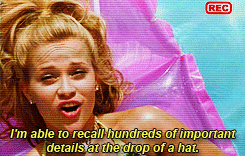If you’ve not yet binged HBO’s miniseries, “Chernobyl,” about the Russian nuclear reactor explosion on April 26, 1986 and its tragic aftermath, that’s probably best. You’ll sleep better. It’s not exactly an uplifting or inspiring tale. It’s also a fictionalized telling of the actual disaster and the attempts the Soviet Union took to cover it up, so inaccuracies and untruths abound. But, if you appreciate stellar acting and a compelling story, and you have five and a half hours to kill, then sit down and get ready to learn how not to manage and communicate a crisis.
Can a Crisis Happen to You?
The first mistake the Soviet Union made, years before the Chernobyl disaster, was not admitting that a crisis could happen at Chernobyl…or anywhere in the Soviet Union, for that matter. Such an occurrence simply did not align with the Soviet Union’s doctrine or dogma. So, while they did conduct safety tests on the reactor, they never prepared fully for an actual crisis. And they certainly never crafted a communications plan for such an event, because crises didn’t happen in the Soviet Union. So, why would they need a communications plan? Thus, when the reactor did explode, they weren’t sure how to respond to it, they downplayed its severity, and they tried to cover it up, which ultimately put the entire European continent in peril and over the years cost nearly 200,000 lives, according to Greenpeace estimates.
Here’s the thing… It’s not a matter of if your organization will experience a crisis. It’s a matter of when. Accepting that reality allows your organization to prepare for that reality. I could talk for hours about all the possible crises that could occur and the many steps you could take in managing and communicating any one of those crises. But we don’t have time for that here. So, here are the basics you need to keep in mind in preparing for and managing a crisis.
Is It Really a Crisis? Will You Need PR Crisis Management?
Chernobyl obviously was a crisis. It was never a question. Those in charge simply would not admit it to themselves, and they and thousands of others suffered for it. So, lesson 1: If you clearly are in crisis, admit it to yourself so you can take action.
However, not every misstep, mistake or accident results in a true crisis. More times than I can count, I have received calls from clients panicking about a comment left on one of their social media channels that is critical of their business. They worry that the comment will impact their business negatively, either by spawning similar comments or by finding its way onto the evening news, and they’ll want to immediately issue a statement to the media or via their online channels. In most of those situations, though, the comment simply died on the vine. Either no one noticed it, no one was moved by it, or no one believed it. Every case is unique, but typically I’ll caution to not panic and simply monitor the comment to determine if a response is merited. By responding prematurely, you can actually create the real crisis.
Regardless of the situation at hand, the seemingly most minor of incidents can erupt into full-blown crises. Your ability to deaden or lessen the impact of a crisis may or may not be limited; you will not know the answer to that question until you’re in the midst of the event. So, act now…before the incident occurs. What’s the old saying? “An ounce of prevention is worth a pound of cure?”
Plan!
Don’t wait for a crisis to hit. Create a plan “now” for when a crisis does occur. And don’t panic about the plan itself. PR Crisis Management & Communications plans can be several pages long or one page long. It all depends on the size of your organization, the type of organization, your familiarity and experience with the media, the proprietary nature of your organization’s data, etc. and so on. The silver lining here is that there are numerous crisis plans that you can find online or through specialists who focus on helping organizations like yours plan for and manage crises. Some simple and quick online research can help you find the resources to meet your needs. Lesson 2: Plan now, not later.
Breathe (assuming the air isn’t radioactive)
When a “potential” crisis does occur, before you do anything else, breathe. Then, assess the situation and determine if you and your organization are truly in crisis. Don’t panic prematurely. Lesson 3: Take a breath, and assess.
Work Your Plan
But when that initial incident does devolve into a legitimate crisis…and the panic sets in, there are steps you can and should take to mitigate both the crisis’s impact on your business and your personal life. First and foremost… Lesson 4: Consult your plan, and work your plan.
Know Your Story
It might seem contrary to the task at hand, but some crisis communications situations can present opportunities for you to tell your story…if you’re prepared. Prior to any crises occurring, everyone in the organization should know the company’s basic story and should be able to retell it in an instant. Write down the key talking points you would want anyone (customer, employee, media, etc.) to know about your organization. Share them throughout your organization. Make them a part of your organization’s mission, vision and values. Then, when communicating a crisis to your various audiences, including the media, you’ll be able to incorporate the appropriate elements of your story into your message to help gain empathy. Lesson 5: Stay on message.
Just the Facts, Please
The deeper you dig your hole, the more difficult it will be to climb out of it. The same logic applies to your crisis situation. Many organizations will be tempted to talk around the facts, make promises they can’t keep, make statements neither they nor the media can verify, or simply duck behind closed doors until the crisis passes. In all of these cases, resist the urge. Beginning immediately, collect all the facts. Quickly, calmly and collectedly, talk with all members of your organization who might have pertinent information to shed light on the situation. Obtain as much perspective as you can without raising alarm. Then assess and determine the actual facts about the situation. From these facts, you can create your narrative that you might need to share with your respective stakeholders. And do not embellish beyond the facts. You do not want to have to walk back your statements later. Lesson 6: Stick to the facts, and only the facts.
Know Your Audience
Organizations often make assumptions about whom they need to inform of a crisis, which typically results in them neglecting important audiences who often could help their cases. Audiences can include: employees, customers/clients, investors, vendors and strategic partners, regulating bodies, the public and the media. Organizations also often fail to modify their messaging per audience, as different groups will have different concerns. This is especially true in regard to media. Keep in mind that not only must you be mindful of how to share information with the media, but you should remember that media are professionals with personal lives similar to yours and mine; they have a job, they have families, they have personal commitments, and they have beliefs and opinions. Understanding this can help you gain empathy from them. Lesson 7: Identify and target each audience.
Know Your Channels
Prior to your crisis, within your plan, you should have already identified which channels—website, social media, news releases, text, company email, etc.—you will use to disseminate your message, depending on which audiences you’re trying to reach. Each channel offers opportunities and challenges that will be critical to successful pr crisis management and communication of your crisis. If you’re unsure of the strengths and weaknesses of each channel, consult a professional who can guide you in that assessment and usage strategy. Lesson 8: Communicate the right message via the right channel.
“No Comment”
What is the absolute worst comment you can give in response to a crisis? “No comment.” Doing so implies guilt, makes you sound insincere and uncaring, and connotes that you are avoiding the subject in the hopes that it will go away. It will not, so don’t try it. You will only make the situation worse. Lesson 9: “No comment” is NOT an option.
PR Crisis Management in a Nutshell
If you follow these basic tenets for managing and communicating a crisis, you and your organization stand a much greater chance of surviving a crisis. You may not escape unscathed. In fact, most rarely do. But it is much more likely that you will avoid a meltdown.
Don’t be Chernobyl.

























